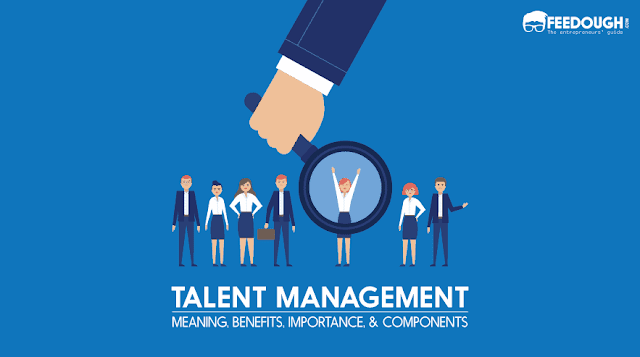Enhancing Employee Experience
Enhancing Employee Experience
Source: https://www.peoplefirst.blogWhat Is Employee Experience?
Stages of the Employee Life Cycle
Attraction
Recruitment
Onboarding
Onboarding is a vital stage in the third phase. It guarantees that the employee is well-acquainted with the organization and their function. Employees are not set up for success until they are properly onboarded. Time-to-productivity and new hire turnover are two excellent indicators for measuring onboarding. Time-to-productivity measures how long it takes a new employee to become productive in their employment. The number of new hires departing the organization is indicated by new hire turnover. Poor onboarding contributes to higher new hire turnover rates.
Development
The fourth phase examines the process of training and developing employees throughout their tenure with the organization. As duties change, business needs evolve, and industry standards shift, it is critical to value continuous growth. Promotion rates indicate how many people are moving up in your organization, which is an indication of individual development. A low promotion rate should make you wonder why your employees aren't being promoted. Are they not being developed sufficiently to fulfill the requirements?
Retention
Separation
Separation is the last stage, which isn't always a bad thing. All employees must leave the organization at some point, whether for another opportunity, retirement, or a poor fit. However, it is critical to understand why people are leaving. Track and measure the reasons why your employees are leaving. Exit interviews conducted during offboarding or separation are the most effective way of gathering this information. People will always claim to be leaving for a new job. But the real question is why they accepted the role or began looking for work in the first place. In addition, if you have a high number of involuntary terminations, inquire as to why. If it's a lack of performance, are employees being under-trained or were they lousy hires? Are you effectively training and communicating with your staff about policy violations?
There are numerous measures for each stage of an employee's lifespan. Keeping track of and monitoring those indicators can be difficult and time-consuming. It is made easier by using an HR dashboard. The program will calculate your metrics automatically by importing data from your various HR systems. It then generates simple graphics to assist you in effectively communicating the numbers. With an HR dashboard, you can be the strategic business partner to top management that your organization requires.
Ways of Enhancing Employee Experience
1) Map up the EX journey.
The employee journey encompasses all aspects of an employee's employment with your organization, beginning when they apply for a position and ending when they leave. A trip map for employees identifies the "moments that matter" for improving EX. Their first day on the job, their first performance review, or their promotion are all examples. This data is critical for anticipating the knowledge and tools that employees will require to be more motivated and engaged.
2) Foster open discussion
3) Improve the onboarding process
4) Respond to feedback
Listening to criticism is a good starting point, but acting on it is what truly improves the EX. Employee engagement and trust are increased when their opinions are respected. It also contributes to a more diverse, egalitarian, and inclusive workplace, which attracts top talent.
5) Provide leadership development training
Conclusion
McKinsey (2022) Shaping the “new possible” employee experience |, McKinsey. Available at: https://www.mckinsey.com/.(Accessed: April 19, 2023).
Content Marketing Manager Milton Herman (no date) 10 Easy Ways to Improve Your Employee Experience Strategy, LumApps. Available at: https://www.lumapps.com/employee-experience/employee-experience-strategies/ (Accessed: April 19, 2023).
Stephen M. Perry, (2021) OpX Addresses Workforce Challenges With the Employee Lifecycle Approach, ProFood World. Available at: https://www.profoodworld.com/business-intelligence/article/21735248/opx-addresses-workforce-challenges-with-the-employee-lifecycle-approach (Accessed: April 28, 2023).
What is the Employee life cycle? | Meaning & Definition | Keka HR (no date) Keka HR. Available at: https://www.keka.com/glossary/employee-life-cycle (Accessed: April 19, 2023).
SemiColonWeb (no date) Employee Life Cycle | HR Diagrams | Download 9+ PPT Slides, Powerslides. Available at: https://powerslides.com/powerpoint-industry/recruitment-templates/employee-life-cycle/ (Accessed: April 19, 2023).
Wride, M. and Maylett, T. (2017) The Employee Experience: How to Attract Talent, Retain Top Performers, and Drive Results.(Accessed: April 29, 2023).
McLeod, J. and Tetzlaff, S. (2016) The Employee Experience.(Accessed: April 27, 2023).
Hawker, N. (2018) From Hire to Fire and Everything in Between: Managing the Employee Life Cycle - Hire, Manage, Wellbeing and Exit.(Accessed: April 28, 2023).





thank you for sharing this blog, organizational behavior helps managers motivate employees, leading to better performance so employers are required to focus on employee engagement, incentives, supportive work culture, and feedback.
ReplyDeleteDhanusha I appreciate your work and hoping to see more in future. Good luck !
ReplyDeleteGood selection of topic. I gained more information regarding enhancing the employee experience
ReplyDeleteQuite interesting topic, i got extra knowledge from your explanations. Good work.
ReplyDeleteenhancing employee experience is vital for every organization.
ReplyDeleteEmployee experience is vital area in HRM. Cleary explained. Good content. In my point of view accessed date should be include in reference list.
ReplyDeleteAn interesting area to go through and let us all wish our selves to be in a nice working environment with better employee experience. 😊
ReplyDelete